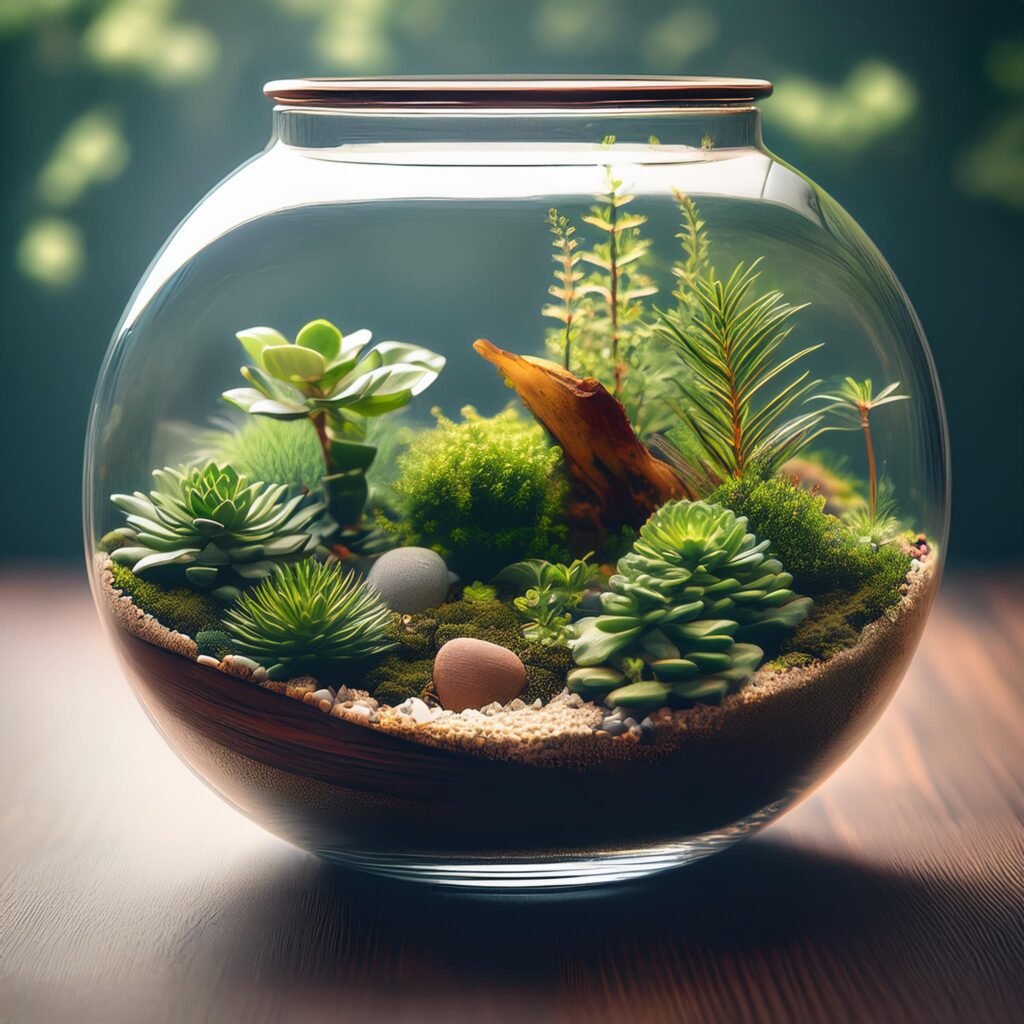
Creating a beautiful and thriving terrarium requires attention to detail and proper care. One of the most common issues terrarium enthusiasts face is mold growth, which can quickly spoil the look and health of your miniature ecosystem. Here are six essential tips to help you prevent mold from taking over your terrarium.
1. Use High-Quality Soil
The foundation of any successful terrarium is the soil. It’s crucial to use a high-quality soil mix designed specifically for terrariums. Many beginners make the mistake of using regular garden compost, which is too water-retentive and can create an anaerobic (oxygen-deprived) environment, leading to mold growth. Cheaper composts also often contain partially decomposed materials like wood chips and bark, which can exacerbate mold issues.
For a healthier terrarium, I recommend a soil mix composed of coir, vermicast, sphagnum moss, and lava rock. This mix is light, airy, water-retentive, yet well-draining—an ideal environment for most terrarium plants. Since I started using this mix, mold issues have been minimal.
2. Increase Airflow
Airflow is critical to the health of your terrarium. While terrariums are naturally humid environments, too much humidity without adequate airflow can create a breeding ground for mold. Balancing humidity and airflow is key.
In large terrariums, consider using small computer fans to circulate air. For smaller terrariums, simply removing the lid for a short time every few days can help fresh air enter. In some cases, leaving the lid off permanently might be an option, provided it doesn’t harm the plants’ humidity needs.
3. Introduce Springtails
Springtails are tiny insects that are incredibly beneficial to terrariums. These micro-organisms feed on mold and decaying matter, helping to keep your terrarium clean and healthy. The tropical white springtail (Phosphonia candida) is an excellent choice for terrariums, as they thrive in humid environments and won’t harm your plants.
To keep your springtails well-fed, you can add a few grains of white rice or a sprinkle of baker’s yeast to the terrarium. Although they won’t eliminate large mold outbreaks, they do a fantastic job of preventing small issues from becoming big problems. Introducing springtails early on in your terrarium setup is a smart move to maintain long-term health.
4. Minimize Soil Introduction
While it’s nearly impossible to avoid introducing soil when planting in a terrarium, you can take steps to minimize potential mold spores. Garden center plants are often grown in cheap compost, which may harbor mold spores. To reduce the risk, use plant cuttings whenever possible, as they don’t require soil.
If you must plant directly, allow the soil to dry slightly before planting and brush off any excess soil from the roots. This method reduces the amount of soil—and potential mold spores—entering your terrarium.
5. Use the Right Hardscape Materials
Choosing the right hardscape materials is essential to avoid introducing mold or pests into your terrarium. For wooden elements, opt for pieces sold in aquatic stores, such as driftwood, bogwood, vidalia root, or spiderwood. These woods are treated to withstand high humidity, making them ideal for terrariums. Cork bark, which is naturally mold-resistant, is another excellent option.
If you prefer to use stones, make sure to clean them thoroughly with soapy water. You can also bake them in the oven to kill any unwanted bacteria, although I typically stick to scrubbing with soapy water.
6. Ensure Adequate Lighting
Mold can grow in both light and dark environments, but it tends to favor darker spots in terrariums. Proper lighting is crucial not only for plant growth but also to discourage mold development. Make sure your terrarium receives sufficient light, whether it’s natural or artificial.
Using a light meter app, such as the one developed by Daryl Cheng, author of “The New Plant Parent,” can help you measure the light levels in your terrarium. For most plants, aim for at least 300 to 400 foot-candles of light, which is usually achievable with artificial lighting.
While mold is a natural challenge in terrarium building, following these tips can greatly reduce the chances of it taking over your miniature garden. Remember, even if mold does appear, it’s often a temporary issue. Don’t be disheartened if you encounter mold—it’s all part of the learning process. With proper care and attention, your terrarium can thrive for years to come.
If you have any more tips or questions, feel free to leave a comment or reach out on social media. And if you found this article helpful, consider sharing it with fellow terrarium enthusiasts!